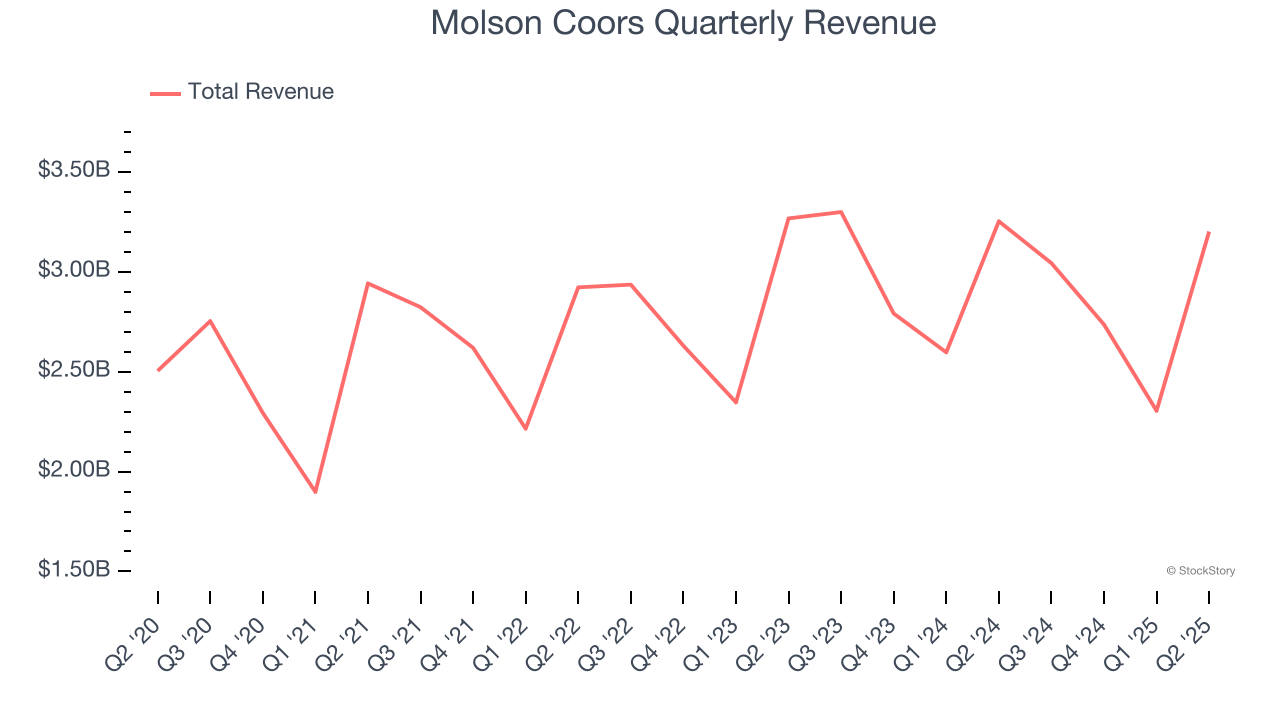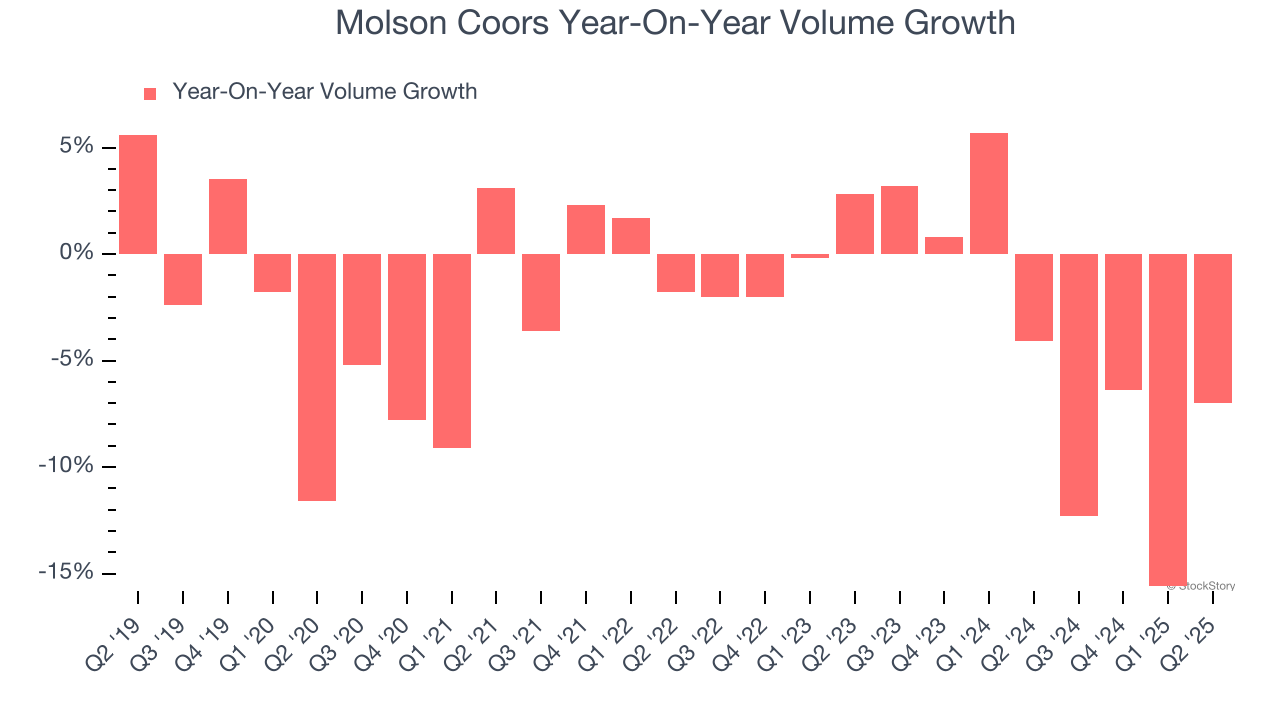
Beer company Molson Coors (NYSE:TAP) announced better-than-expected revenue in Q2 CY2025, but sales fell by 1.6% year on year to $3.20 billion. Its non-GAAP profit of $2.05 per share was 13.1% above analysts’ consensus estimates.
Is now the time to buy Molson Coors? Find out by accessing our full research report, it’s free.
Molson Coors (TAP) Q2 CY2025 Highlights:
- Revenue: $3.20 billion vs analyst estimates of $3.12 billion (1.6% year-on-year decline, 2.7% beat)
- Adjusted EPS: $2.05 vs analyst estimates of $1.81 (13.1% beat)
- Adjusted EBITDA: $763.9 million vs analyst estimates of $688.5 million (23.9% margin, 10.9% beat)
- Operating Margin: 18.2%, in line with the same quarter last year
- Free Cash Flow Margin: 17.3%, down from 21.5% in the same quarter last year
- Sales Volumes fell 7% year on year (-4.1% in the same quarter last year)
- Market Capitalization: $9.84 billion
Company Overview
Sporting an impressive roster of iconic beer brands, Molson Coors (NYSE:TAP) is a global brewing giant with a rich history dating back more than two centuries.
Revenue Growth
Examining a company’s long-term performance can provide clues about its quality. Any business can put up a good quarter or two, but many enduring ones grow for years.
With $11.28 billion in revenue over the past 12 months, Molson Coors is one of the larger consumer staples companies and benefits from a well-known brand that influences purchasing decisions. However, its scale is a double-edged sword because there are only so many big store chains to sell into, making it harder to find incremental growth. To accelerate sales, Molson Coors likely needs to optimize its pricing or lean into new products and international expansion.
As you can see below, Molson Coors grew its sales at a sluggish 2.2% compounded annual growth rate over the last three years as consumers bought less of its products. We’ll explore what this means in the "Volume Growth" section.

This quarter, Molson Coors’s revenue fell by 1.6% year on year to $3.20 billion but beat Wall Street’s estimates by 2.7%.
Looking ahead, sell-side analysts expect revenue to grow 1.3% over the next 12 months, similar to its three-year rate. This projection is underwhelming and implies its newer products will not lead to better top-line performance yet.
Software is eating the world and there is virtually no industry left that has been untouched by it. That drives increasing demand for tools helping software developers do their jobs, whether it be monitoring critical cloud infrastructure, integrating audio and video functionality, or ensuring smooth content streaming. Click here to access a free report on our 3 favorite stocks to play this generational megatrend.
Volume Growth
Revenue growth can be broken down into changes in price and volume (the number of units sold). While both are important, volume is the lifeblood of a successful staples business as there’s a ceiling to what consumers will pay for everyday goods; they can always trade down to non-branded products if the branded versions are too expensive.
Molson Coors’s average quarterly sales volumes have shrunk by 4.5% over the last two years. This decrease isn’t ideal because the quantity demanded for consumer staples products is typically stable. 
In Molson Coors’s Q2 2025, sales volumes dropped 7% year on year. This result represents a further deceleration from its historical levels, showing the business is struggling to move its products.
Key Takeaways from Molson Coors’s Q2 Results
We liked that Molson Coors beat analysts’ revenue and EPS expectations this quarter. Still, volumes sold are still declining. The market seemed to be hoping for more in this quarter, and the stock traded down 1.2% to $48.04 immediately following the results.
So do we think Molson Coors is an attractive buy at the current price? If you’re making that decision, you should consider the bigger picture of valuation, business qualities, as well as the latest earnings. We cover that in our actionable full research report which you can read here, it’s free.
